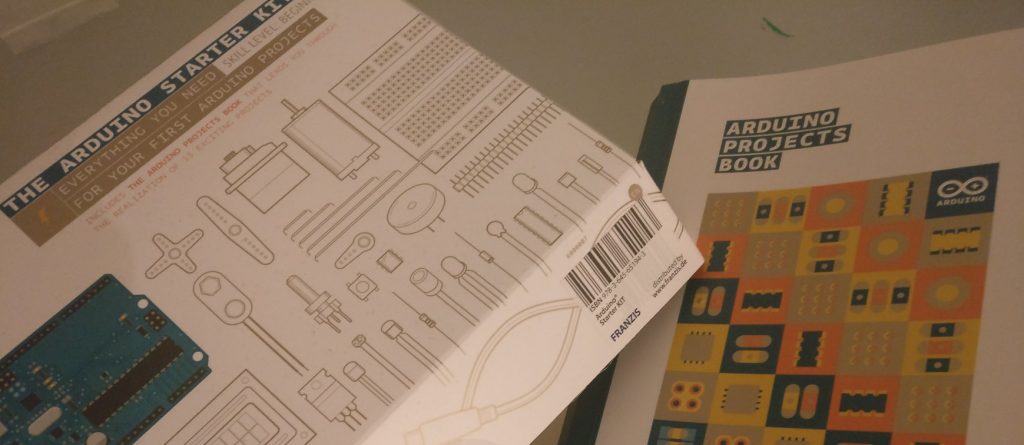So I recently bought an Arduino starter kit. Here’s what I did and thought of it.
An Arduino is a microcontroller on a little circuit board that you can easily upload code to to read information from and provide power to various electrical components.
The official starter kit comes with the Arduino itself, a bunch of components, and a book with 15 projects you can make with it, to learn how to use it. I love books, and since I didn’t have much previous electronics knowledge I figured I would start at page 1 and take it from there. After some explanation of what the Arduino is and does, I made it to the basic setup instructions where you upload some code to the Arduino to make one of the on-board LEDs blink.
I plugged it in. It blinked. It wasn’t supposed to blink, I thought, I hadn’t uploaded the program yet, the blinking light must be some kind of error message. I grumbled. I put the book aside, did some googling, eventually modified the blinking code to blink faster and tried to upload that to see if that changed anything. It did, so I figured it was working now.
I went back to the book and flipped the page. The page contained instructions about how some boards come with the program pre-loaded, and how to modify the blinking time to check your setup.
…Oh. I guess those pieces of wisdom about reading through all the instructions before starting work may have some truth to them.

Flip more pages, stuff some wires and LEDs into the breadboard it comes with, upload more code and…It’s alive! Being able to switch an LED on and off with a button may not be particularly impressive, but I did a victory dance anyway. The projects after that try to be a little more ‘useful’, as long as you consider ‘measure the temperature of your finger to determine your love-o-meter score’ and ‘move an arrow to point at your current mood’ to be useful.
Things start extremely easy and go up to reasonably advanced. Once you realize that you have a bunch of sensors (photocells, buttons, dials) to collect input from, and a bunch of output options (screen, servo motor, LEDs) and all you have to do is connect them to one of the arduino’s pins and tell it what to do, you can make pretty much anything. For the minecraft folk among you: This is like real life redstone, but better.
Sure, to make it all work you will need some know-how about electrical circuits and their components, and a bit of patience and luck (I spent forever trying to get stable input from one of my sensors, and in the end all it took was wiggling the wires a bit…). But the book explains things reasonably well and the documentation on the website is great if you have more precise questions. Am I going to invent insanely useful things with this? Nah, but I probably am going to figure out something useless but awesome to make, which is what this is about anyway.
The final verdict:
Doability index: 4/5
There was very minimal troubleshooting for the initial setup, mostly because I tried to go exactly by the book and the actual product was more user-friendly than the documentation suggested. The instructions are easy to follow. Inventing your own circuits requires some brain juice because the laws of physics don’t have an error log, and could damage your equipment.
Stuff learned: 5/5
I re-learned pretty much everything about electronics that I had been taught in high school and had since forgotten, and then some. I have also gotten more optimistic about one day using the GPIO pins on my Raspberry Pi, because the only thing better than a random and useless device is a random and useless device that’s connected to the internet.
Coolness factor: 3.5/5 or 6/5
Blinking LEDs are not the most showy end result. Some of the later projects in the book are slightly more functional but not something I would actually show off/use. However, since you can make literally almost anything you can think of, the potential awesomeness level is off the charts.
Plus: The existence of the Arduino Lilypad (a sewable, washable Arduino for making clothes awesome) means that I practically MUST make an LED-encrusted top or dress at some point.
